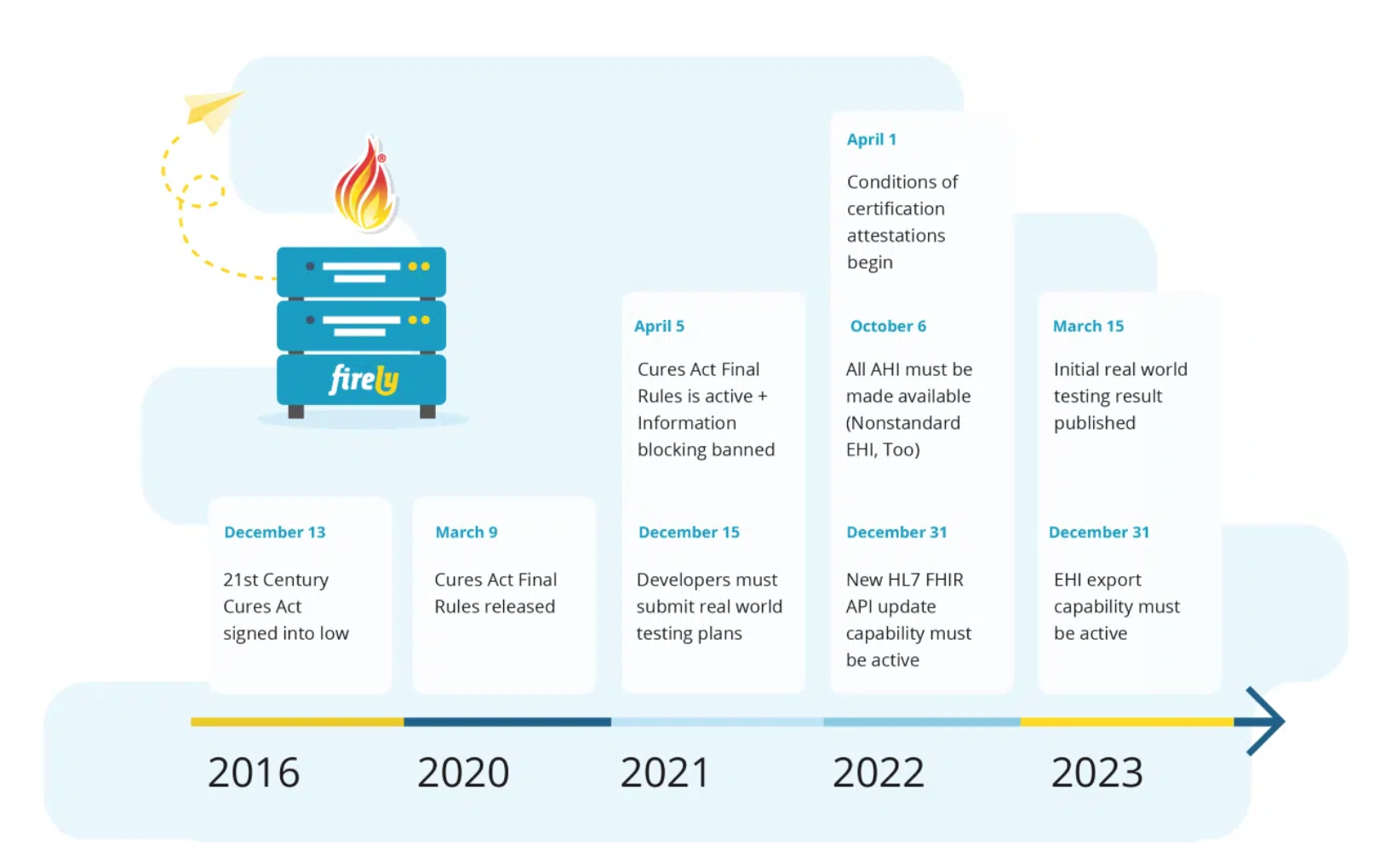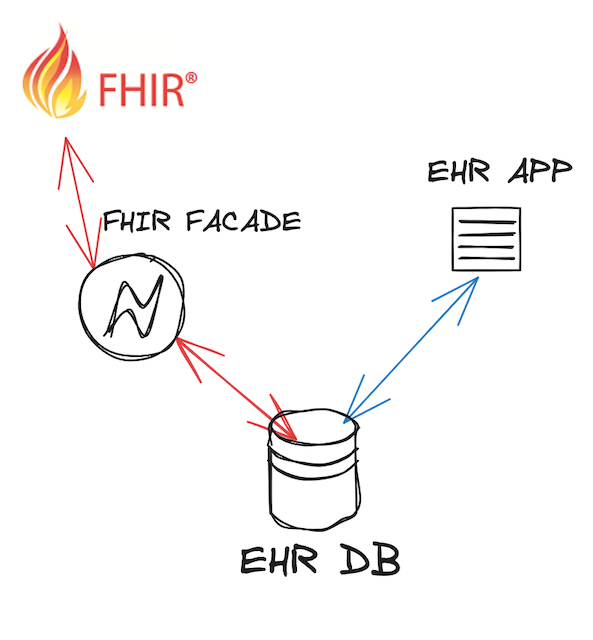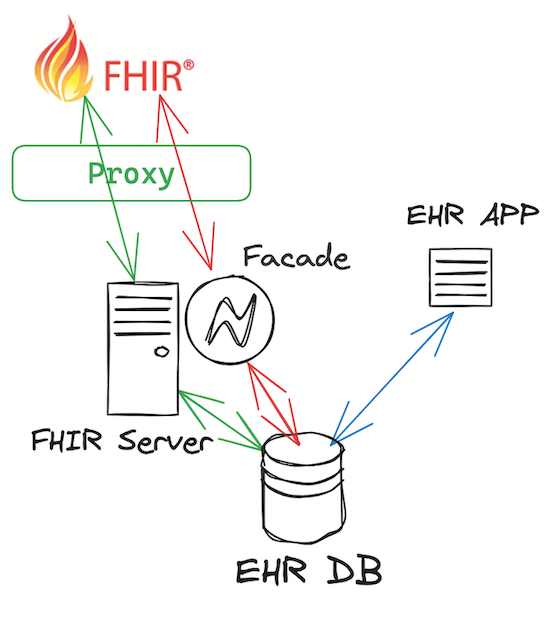The WHAT-WHY-HOW of FHIR based Digital Health Renaissance we are witnessing now
Introduction to FHIR: Revolutionizing Healthcare Interoperability
TL;DR
Here in this blog, we give a detailed rundown of the what-why-how of the FHIR based digital health renaissance being witnessed worldwide. Anyone building healthcare systems needs to consider a FHIR first approach; otherwise, the odds of hitting a roadblock for scale are high.
Table of Contents
Introduction
Fast Healthcare Interoperability Resources (FHIR) is a groundbreaking standard and specification that empowers seamless electronic exchange and interoperability of healthcare information between systems. Developed by Health Level Seven International (HL7), FHIR provides the foundational building blocks for mapping real-world healthcare resources, enabling efficient and standardized data sharing.
FHIR is a set of Specifications: Bridging Healthcare and Technology
The FHIR specification is meticulously designed with two primary goals in mind:
- Developer-friendly: Leveraging modern web and app development principles to simplify implementation.
- Healthcare-centric: Ensuring seamless alignment with healthcare domain requirements.
Foundational Building Blocks of FHIR
The FHIR specification is constructed around key components that balance technological agility and healthcare expertise:
- Modular & Extensible architecture
- RESTful APIs
- JSON, XML, and other data formats
- Robust security, authentication & authorization protocols
- Extensive coverage of all key healthcare resource models
- Extensive terminology and coding systems support
- Flexible resource search and query capabilities
Standard FHIR Resources
Basis of FHIR is provide 80% coverage of commonly used healthcare resources and remaining can be achieved by defining FHIR extensions. Here are examples of core FHIR resources: - Patient - Patient Ecounter - Diagnostic reports (radiology, pathology) - Medications and immunizations - Appointments and scheduling
Based on the FHIR specification - software vendors have their own implementations of FHIR servers for commercial digital health usecase serving both as a clinical data repository and API specs for data exchange/interoperability.
Popular Open Source and Proprietary FHIR Servers:
- HAPI FHIR (Open Source)
- MedPlum (Open Source)
- Firely (Proprietary)
- Smile CDR
- Health Samurai (Proprietary)
- Health Stack of Public Cloud Providers- Azure, Google, AWS etc
Harmonizing Healthcare and Technology
By merging cutting-edge technology with in-depth healthcare knowledge, FHIR's importance extends beyond data exchange; it enables:
Improved Patient Care: By providing healthcare practitioners with comprehensive, accurate, and up-to-date patient information, FHIR facilitates informed decision-making and better health outcomes.
App Development and Innovation: FHIR's compatibility with current web technologies makes it an ideal platform for developing innovative healthcare applications.
Enhanced Data Sharing and Collaboration: FHIR streamlines data exchange between healthcare providers, promoting seamless collaboration and coordination.
Streamlined Clinical Workflows: By reducing administrative burdens, FHIR allows healthcare professionals to focus on patient care.
Future Proofing of Healthcare Data: Ensuring healthcare data is stored in a standardized, normalized format using FHIR resources helps future-proof clinical data, allowing for seamless migration between evolving technologies.
FHIR's thoughtful design empowers developers to craft intuitive, healthcare-focused solutions that transform the industry.
US Government Mandates FHIR
- A Key Driver for the FHIR based healthcare Renaissance we are witnessing now.
FHIR's surge in popularity can be attributed to government adoption and mandates, driving the healthcare industry toward standardized and interoperable patient records. The US has pioneered FHIR adoption, with other countries like India and Saudi Arabia following suit with their own FHIR-based implementations, such as India's Ayushman Bharat Digital Mission (ABDM) and Saudi Arabia's National Primary Healthcare Information Exchange (NPHIES).
Key Government Mandates
In the US, FHIR adoption has been accelerated by:
ONC's Cures Act Final Rule (2019): Mandates FHIR-based APIs for Electronic Health Records (EHRs)
CMS's Interoperability and Patient Access Rule (2020): Requires FHIR-based data sharing
Information Blocking Rule (2020): Prohibits restricting access to patient data, enforcing FHIR!

Benefits of FHIR Compatibility
The widespread adoption of FHIR enables:
App Development and Innovation: Modern web technologies and APIs drive innovation
Improved Patient Care: Comprehensive, accurate, and up-to-date patient information enables informed decision-making
Enhanced Data Sharing and Collaboration: Streamlined data exchange promotes seamless coordination between healthcare providers
Streamlined Clinical Workflows: Reduced administrative burdens allow healthcare professionals to focus on patient care
A Global Standard for Healthcare
FHIR's success can be attributed to its dynamic, real-world relevance, and search API capabilities, making it a universal standard for healthcare data interoperability.
As FHIR continues to transform the healthcare landscape, its importance cannot be overstated, particularly in the post-pandemic era where telehealth and remote patient care have become increasingly vital.
FHIR Paradigms
FHIR is deployed in majorly 3 different paradigms - by which it finds its applicability in Digital Health
1. Document Exchange Paradigm
In this paradigm, FHIR enables document exchange between authorized entities through: 1. Bundle: A collection of resources (e.g., patient data, documents). 2. DocumentReference: A resource referencing a document. 3. Binary: A resource storing document contents. FHIR Document Exchange Paradigm: 1. Create: Generate a document (e.g., CDA, PDF). 2. Store: Store the document in a FHIR server. 3. Reference: Create a DocumentReference resource. 4. Share: Share the DocumentReference with authorized parties. Examples of such a paradigm is India's National Digital Health implementation called ABDM is founded around the document exchange paradigm of FHIR
2. Messaging Paradigm
NPHIES (National Primary Healthcare Information Exchange System) leverages FHIR's messaging paradigm to enable secure, standardized exchange of healthcare information.
FHIR messaging enables real-time, event-driven communication between systems:
- Events: Define triggers for message exchange (e.g., patient admission).
- Messages: Contain relevant data (e.g., patient demographics).
- MessageHeaders: Provide metadata (e.g., sender, receiver).
3. SMART on FHIR Paradigm
The widely used in the US region context Paradigm of FHIR is SMART on FHIR. It is an open-standard, app-based paradigm enabling innovative healthcare applications to integrate with Electronic Health Records (EHRs) and other healthcare systems.
Key Components
- FHIR Server: Provides standardized data access.
- EHR System: Hosts FHIR server and patient data.
- Smart on FHIR App: Leverages FHIR APIs to interact with EHR.
- Authorization: OAuth 2.0-based authentication.
Smart on FHIR Paradigm 1. Registration: App registers with EHR system. 2. Authorization: User grants app access. 3. Launch: App launches within EHR context. 4. Data Access: App retrieves/pushes data via FHIR APIs.
FHIR Compatibility Demystified
- Approaches of making legacy EHR Systems FHIR Compatible
Approach 1 - Implementing a fulfledged FHIR FACADE
- Implement a FHIR Facade or API Layer Interface: Implement an API layer interface within the EHR system to expose FHIR-native API communications with the legacy EHR database, ensuring seamless FHIR compatibility.
- Challenges of Facade Approach: Achieving FHIR compatibility through a facade approach is a costly and resource-intensive method, requiring extensive custom transformation logic development to reconcile EHR data models with FHIR standards.
- Leveraging Existing Solutions: Utilize established APIs like HAPI or Firely to streamline FHIR implementation, reducing development complexity and costs.
- EHR Database Availability: One has to ensure the EHR database is accessible and available to support FHIR API interactions, guaranteeing uninterrupted data exchange.

Approach 2: Full FHIR Server Implementation
Dedicated FHIR Server Approach for FHIR Compatibility
To achieve FHIR compatibility, we employ a dedicated FHIR Server, enabling seamless data interoperability.
Key Components
Real-time Data Persistence: Relevant EHR data is persisted in real-time to the FHIR Server, ensuring up-to-date information for interoperability requirements.
Data Synchronization Mechanisms: Data synchronization is achieved through various mechanisms, including:
- Webhooks
- Change Data Capture (CDC)
- Other real-time data integration methods
FHIR Server as Single Source of Truth: The FHIR Server serves as the primary source for FHIR data, handling all FHIR-related traffic and requests.
Benefits
- Improved Interoperability: Enhanced data sharing and exchange between healthcare systems.
- Real-time Data Access: Up-to-date information available for informed decision-making.
- Reduced Complexity: Simplified data integration and management.
Architecture
- EHR System → FHIR Server (real-time data persistence)
- FHIR Server → Handles FHIR requests and responses
- Webhooks/CDC → Enable real-time data synchronization
By hosting a dedicated FHIR Server, we ensure seamless FHIR compatibility, real-time data persistence, and efficient data interoperability.

Approach - 3: Hybrid FHIR Server Approach
The Hybrid FHIR Server approach combines the benefits of both Facade and dedicated FHIR server architectures.
Key Characteristics
Dual-Path Architecture:
- Writes: EHR data updates are channeled through the FHIR Facade.
- Reads: Data retrieval requests are served directly from the dedicated FHIR Server.
Internal Synchronization:
- EHR database and FHIR Server are synchronized in real-time using:
- Change Data Capture (CDC)
- Webhook mechanisms
- Other data integration methods Benefits
- EHR database and FHIR Server are synchronized in real-time using:
Optimized Performance: Writes are handled efficiently via Facade, while reads leverage the FHIR Server's optimized query capabilities.
Improved Data Consistency: Real-time synchronization ensures data accuracy and integrity.
Flexibility and Scalability: Hybrid approach allows for adaptability to changing healthcare data exchange requirements.
Architecture
EHR System → FHIR Facade (writes)
FHIR Facade → EHR Database (updates)
EHR Database → FHIR Server (real-time synchronization via CDC/Webhooks)
FHIR Server → Handles read requests
Advantages
Best-of-Breed Solution: Combines strengths of Facade and dedicated FHIR Server.
Reduced Complexity: Simplifies data management and integration.
Enhanced Interoperability: Supports seamless data exchange and sharing.
By adopting the Hybrid FHIR Server approach, healthcare organizations can achieve efficient, scalable, and interoperable data exchange.

DEMO VIDEOS
FHIR Compatibility Demystified: Intro PART A
FHIR Compatibility Demystified: Actual DEMO PART B
Refernce Links
- Official HL7 FHIR Site - https://www.hl7.org/fhir/
- Intro to FHIR - https://www.youtube.com/watch?v=YbQcJj1GqH0&t=0s
- SMART on FHIR - https://smarthealthit.org/
- Darren Devitt Website - https://darrendevitt.com/
👇 The scope of FHIR realized in the context of specific use-cases is what we will cover in the next section 👇:
FHIR Profiles and Implementation Guides
FHIR Profiles and Implementation Guides enable standardized customization of FHIR for specific use cases, ensuring interoperability and consistency.
FHIR Profiles
A FHIR Profile defines a set of constraints and extensions on existing FHIR resources, making them more specific and tailored for a particular domain or use case.
Key Characteristics
- Constrained Resources: Profiles limit resource elements, cardinalities, and data types.
- Extensions: Add new elements or modify existing ones.
- Value Sets: Define allowed values for specific elements.
- Code Systems: Specify coding systems for terminology.
Types of FHIR Profiles
- Domain Profiles: Focus on specific clinical domains (e.g., oncology).
- Regional Profiles: Address regional or national requirements.
- Organization Profiles: Tailor FHIR for specific healthcare organizations.
FHIR Implementation Guides (IGs)
Implementation Guides provide a comprehensive framework for deploying FHIR Profiles in real-world scenarios.
Key Components
- Use Cases: Describe specific scenarios for FHIR Profile application.
- Profile Definitions: Include constrained resources, extensions, and value sets.
- Interoperability Requirements: Outline data exchange and security expectations.
- Guidance: Offer best practices, examples, and tutorials.
Benefits of FHIR Profiles and IGs
- Standardization: Encourages consistency across similar use cases.
- Interoperability: Facilitates seamless data exchange.
- Reusability: Reduces development costs.
- Clarity: Provides clear guidance for implementation.
Examples of FHIR Implementation Guides
- US Core Profile: Standardizes FHIR for US healthcare.
- Argonaut Project: Focuses on FHIR for clinical data exchange.
- IHE (Integrating the Healthcare Enterprise): Defines FHIR-based profiles for imaging and other domains.
Tools for Working with FHIR Profiles and IGs
- FHIR Validator: Verifies profile conformance.
- FHIR IG Publisher: Generates implementation guide documentation.
- FHIR Profile Editor: Visualizes and edits profile definitions.
By leveraging FHIR Profiles and Implementation Guides, healthcare organizations can tailor FHIR to their specific needs while ensuring interoperability and consistency.
Atul-Kuruvilla
Github: pythonpen
No comments yet. Login to start a new discussion Start a new discussion